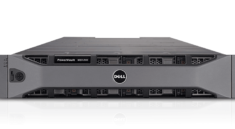What is a social media report?
A social media report is a data set of various social metrics. This dataset can include keywords, reviews, names, and any other social metrics that may contain relevance to a profile. A social media report is commonly used to evaluate the performance of a business or product.

An online tool is used to browse through the social media sites of interest. Then, the tool indexes each of the sites for later inspection. The tool can view what is said about the business and archive this information in a database.
Social media reports also reveal information about the flow of internet traffic and visits to a site. These metrics can help to form a comprehensive profile. Businesses can make a more informed decision about a product based on the audience’s attitude toward the product.
Search tools cannot be used to search for private information. Most social media sites have special security to prevent tools from searching. Any online information that is listed as private or unlisted cannot be searched by the tools due to encryption security.
How to use a social media report effectively.
It is important for a business to understand its highest priority regarding marketing. Every search tool is optimized for a different purpose.
Depending on the site, a business may have an interest in their number of followers. There should be social proof that a brand is successful. One of the most effective ways to measure this is to define the number of followers.
Monitoring the number of followers can be especially useful if the product experiences a surge in popularity or otherwise. This can help the business to figure out what is the reason behind the observed result.
A business should be familiar with the social metrics regarding their website. There are several metrics to pay attention to including the number of clicks and bounceback rate.
Each business has its own list of priorities when it comes to these metrics. However, it is important to give some attention to metrics that can directly impact the success of a product.
For example, a high bounce back rate is not desirable for sites. A high bounce back rate means that the visitors do not click past the home page. This generally indicates a lack of interest. Sites like a blog are expected to have a high bounce back rate because there is usually only one page to visit.
How other sites can help.
Analytic sites and platforms can broaden search options and present more effective results. NetBase is an analytic site that offers an in-depth analysis of social profiles.
An analysis site can reduce the cost of management teams and user experience. Many of the tools use a natural learning algorithm to detect key patterns.
Businesses can also use a social media report to learn from their competitors. Many of the tools can provide information about the sites that provide the most traffic for competitors. This is a common technique used by most business to further develop its product.
Another benefit of analysis tools is the organizational layout. Most tools present businesses with the option to divide searches based on key timeframes like weekly, monthly, or quarterly. This can help to filter the searches and provide the most relevant data.
Why business should use an analysis tool.
Most marketing is done online. Most consumers browse through the internet. Therefore, businesses must tailor their marketing strategy to fit a digital environment. The benefit of an analytic site is the professional service. Businesses can lend their assignments to a third party to decrease the workload.





